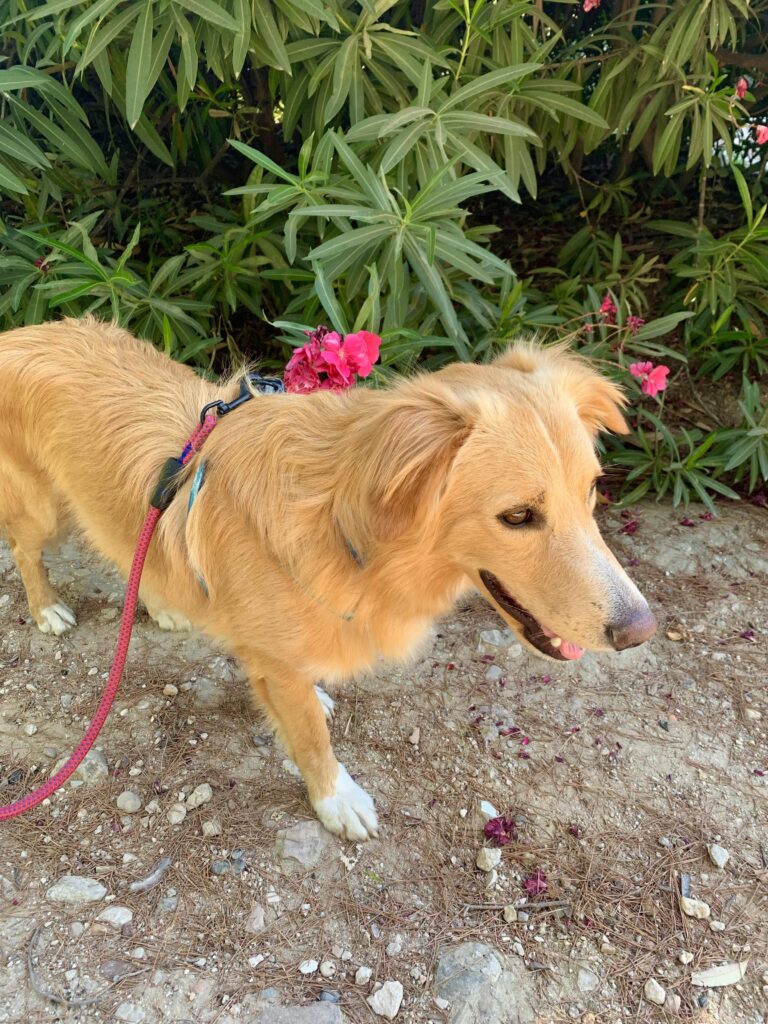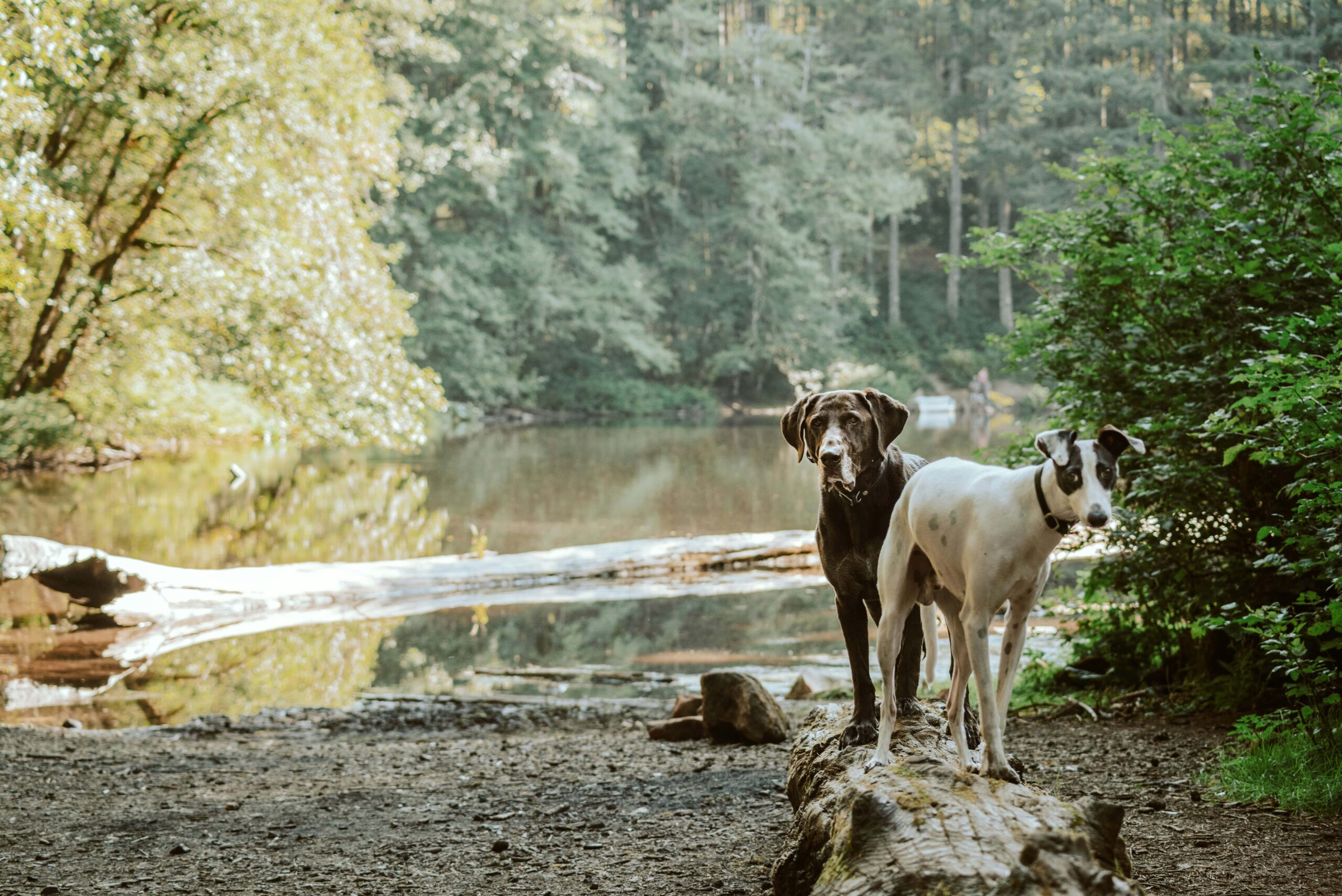Stepping outside the house with your dog can feel like a daunting task when your furry companion is reactive. Speaking from experience, the prospect of walking my dog has often been the most stressful part of my day. I’ve often felt caught in a cycle of anxiety, torn between meeting my dog’s exercise needs and managing my own concerns. Ten months later, after consistent training and a healthy dose of patience, the walks with my dog have become significantly more enjoyable.
I remember desperately searching for help online and now I want to share the tips that have transformed our walks.
Meet Rocket

If you’ve been here before, you may have already know Rocket – the inspiration behind Barklopedia. I adopted Rocket when he was 1.5 years old. At the time of his adoption, I wasn’t made aware of his reactive tendencies; however, I learned that he had 2 previous owners, which could be considered a ‘red flag’ given his age.
Rocket’s Reactivity Triggers
There are degrees to reactivity, some dogs may only be dog reactive whilst others may be startled by a wide array of triggers.
In Rocket’s case, he has been on the more ‘extreme’ end of the spectrum, he has been known to lunge and bark at:
- Dogs
- Bicycles/Motorbikes/Scooters
- People
- Cats
- Pigeons
- Loud, large vehicles
My Top Tips for Walking a Reactive Dog
Check yourself: Get help from a professional trainer
Getting help from a professional trainer has been a game-changer for us! Finding the right trainer may take time, I tried two before discovering the perfect match.
What made him the right fit? His focus on positive reinforcement, instant understanding of Rocket’s behavior, and uncovering the root cause of Rocket’s reactivity. He confirmed that Rocket could be sociable with other dogs and was eager to set up comfortable interactions for Rocket.
Before this professional insight I was under the impression that Rocket could not be trusted to socialise with other dogs and he therefore wasn’t being given the opportunity to socialise. Over time, this would have caused more problems..
Amongst many other aspects, a professional trainer will also be able to correct your leash handling which is critically important when walking a reactive dog. I had picked up bad habits which ultimately caused tension in the leash, exacerbating Rocket’s anxiety and fuelling his reactions.
Manage your own emotions and expectations
There will be good days and more difficult days, the progress will not be linear. A bad walk doesn’t mean that all hope is lost. It can be difficult to remain positive. My trainer recommended keeping a note of the good walks vs. the ‘bad’ walks. By doing so, you may find that the good ones outweigh the bad!
I’ve also realized that my emotions play a significant role. Whether I’m running late or had a stressful day at work, it affects Rocket. The calmer I am, the calmer he tends to be. While it’s impossible to eliminate all stressors, I’ve found that when I’m particularly stressed, I prioritize my own relaxation before leaving the house. Sometimes, I even play calming music during our walks. Additionally, I make sure never to rush when walking Rocket – I allow enough time.
Be mindful of your dog’s threshold
During Rocket’s training, I worked with him step by step. Initially, he would bark at people on the other side of the road, but now we can pass people on the same pathway without incident. This progress was gradual. When Rocket becomes strongly fixated on a trigger and is unable to accept a treat (usually a piece of turkey), it’s a sign that he’s too close to the trigger. If he reaches his threshold, he can’t make good decisions or learn appropriate behaviors. However, with gradual exposure and positive reinforcement training, we’ve been able to ‘close the gap.’ It’s essential to be mindful of your dog’s limits.
Work on obedience
Training commands have their uses for all dogs but they are particularly important for reactive dogs. Rocket has learned to walk closely by my side when we encounter triggers that are uncomfortably close. Commands such as ‘leave it’ also help him to work on his overall self control. Additionally, this command can be used to discourage him from fixating on triggers.
Consider the best route
The environment matters. When I walk Rocket through industrial areas with loud vehicles, bustling crowds, and bikes, it adds to his stress.
Dogs find relaxation in sniffing – the more he sniffs, the more relaxed he becomes. As a result, I intentionally choose grassy, park-like environments for all our walks. These settings allow Rocket to explore and sniff which reduces his stress and contributes to his overall happiness.
If you have the option, consider quieter, more remote places to further alleviate your dog’s anxiety.
Step By Step
Despite my initial concerns, Rocket’s progress has been remarkable. Ten months of consistent training, patience, and dedication have transformed our walks and now I’m thrilled to share the tips that have made a significant difference in our lives.
Remember, every dog is unique, and what works for Rocket may not be identical for others. Trust your instincts, seek professional guidance, and celebrate the small victories along the way.

